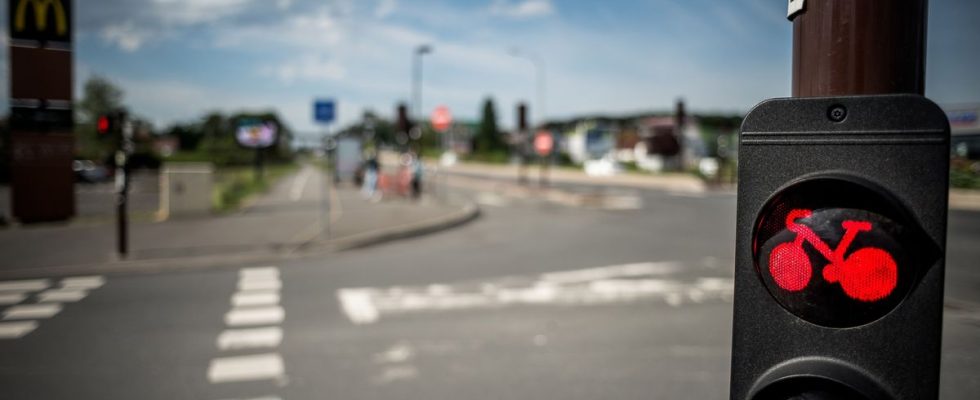“Take line 3, then 7 to Château-Landon. Walk to the Gare de l’Est to take the Transilien P to Vaires-Torcy where a bus, the 421, direction Gare d’Emerainville Pontault-Combault RER, takes you an 11-minute walk from the site Olympic Games in Vaires-sur-Marne, stopping at the “Le Canal” stop. » This is the route proposed by Citymapper, the favorite app for connected urbanites, to reach one of the 13 Olympic sites located in the inner or outer suburbs in 1 hour 20 minutes. So not easy. Double count if the spectator does not live in Île-de-France. And triple if he doesn’t speak French.
In short, transport to access the Paris Games competitions may well crystallize some tensions. And at 20 minutes, we even have the impression that despite the announcements from Paris-2024 and Île-de-France Mobilités (IDFM) on the subject, concerns are starting to arise. “We put a few small warnings on private security because we won’t succeed. It will undoubtedly be necessary to resort to internal security forces. On transport, I think we will be good. », announced Pierre Moscovici, first president of the Court of Auditors, at the beginning of October on Franceinfo. However, if accredited people will benefit from the reserved Olympic lane, already planned to connect all the sites, what solutions will be offered to spectators, particularly on sites not accessible by metro?
The reign of the “all-coach”?
On the sites of Elancourt (Yvelines) and Vaires-sur-Marne (Seine-et-Marne) which will respectively host the mountain bike events on one side, and canoeing, kayaking and rowing on the other, the public could well face some difficulties. “There will be no possibility of parking near the competition sites, with the sole exception of people with reduced mobility on presentation of their mobility inclusion card,” explains IDFM.
To access these competition sites, the plan is to take either public transport or bicycle. “To get to the Vaires-sur-Marne site during the Games period, spectators can take: either the Transilien P to Vaires/Torcy then walk to the site, or the RER A to Bussy St Georges then shuttle (bus) to the site (only during the Olympic Games), or the RER E to Chelles then shuttle (bus) to the site (only for flat water events),” adds the organization.
Where are we with the “Olympists”?
On the bicycle option, the Vélo Île-de-France collective published a press release on Monday, in which it is concerned about the delays accumulated in the construction of the Olympic cycling network. “Ten months before the Olympic and Paralympic Games, 20% of the network is still not completed,” according to their own figures. Which means that on these 20%, no work has been initiated. “We cannot be satisfied with 80% cycling Olympics, that is not the promise, and above all people will only take their bike if the network is complete,” warns Jeanne Bruge, the deputy director of the collective.
However, as the Vélo Île-de-France collective points out, on the test event mountain biking in Elancourt a month ago, 10% of the 3,000 spectators were cyclists. When we know that we expect 15,000 for the Olympics on this site, the tracks are a key element of the organization. But Île-de-France Mobilités, which must work with local authorities on this subject, has no concerns about this. “To facilitate the conditions of access to the site for spectators, important and specific communication will be launched with ticket holders ahead of the Games, then during, to inform them in real time of the best routes to take.” Be patient and trust. “Overall, the indicators are green. The site is very nice, it appeals to athletes, we have a French team which is at the top level. We leave with a lot of energy and serenity,” commented Tony Estanguet, after the rehearsal in Elancourt, where he particularly praised the smooth running of transport.
Are we going to have to do without VTCs?
Paris-2024, like IDFM, has insisted on the establishment of a PMR system on each site, with specific shuttles which can transport people in wheelchairs and their companions to the entrance to the Olympic sites. “There is still a long way to go to respond to the obstacles that people with disabilities may encounter, we are all mobilized,” declared Élisabeth Borne on September 20. The Olympic and Paralympic Games must be an opportunity to boost a more inclusive society.”
On the other hand, the organizers have not a priori planned to ask for help from VTC drivers, excluded from the use of the Olympic routes. A coalition called Paris Mobilité VTC and bringing together unions and VTC applications, challenged the Minister for Transport Clément Beaune in a letter on Friday. The profession considers itself discriminated against by taxis, which are included in the transport plan for the Paris Olympics. “Most strategic urban planning and development projects partially and most often completely exclude VTCs while giving full access to taxis. This is particularly the case for systems specific to the Olympic and Paralympic Games (JOP),” she underlines in the letter.
In the decree published in the Official Journal on July 31, it is written that the lanes reserved from July 1 to September 15, 2024 will be for “vehicles of persons accredited by the organizing committee of the games”, “taxis, transport vehicles public transport, vehicles intended to promote the transport of people with reduced mobility”, as well as emergency vehicles on the A1, A4, A12, A13, A86, A104 and the N13. There is no mention of VTCs. No parking, no Uber, spectators have been warned.

